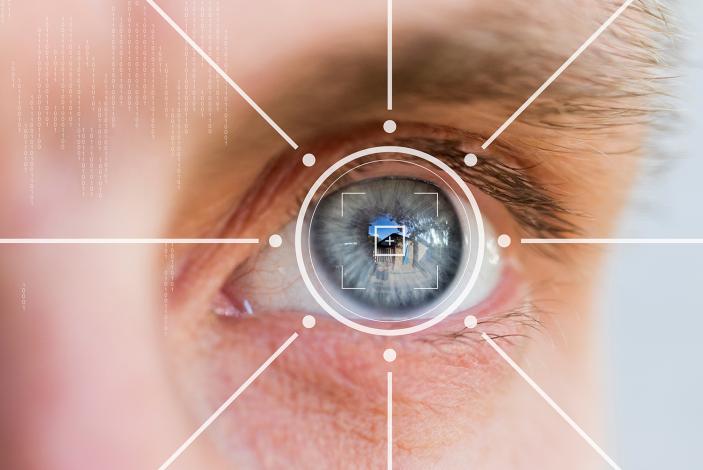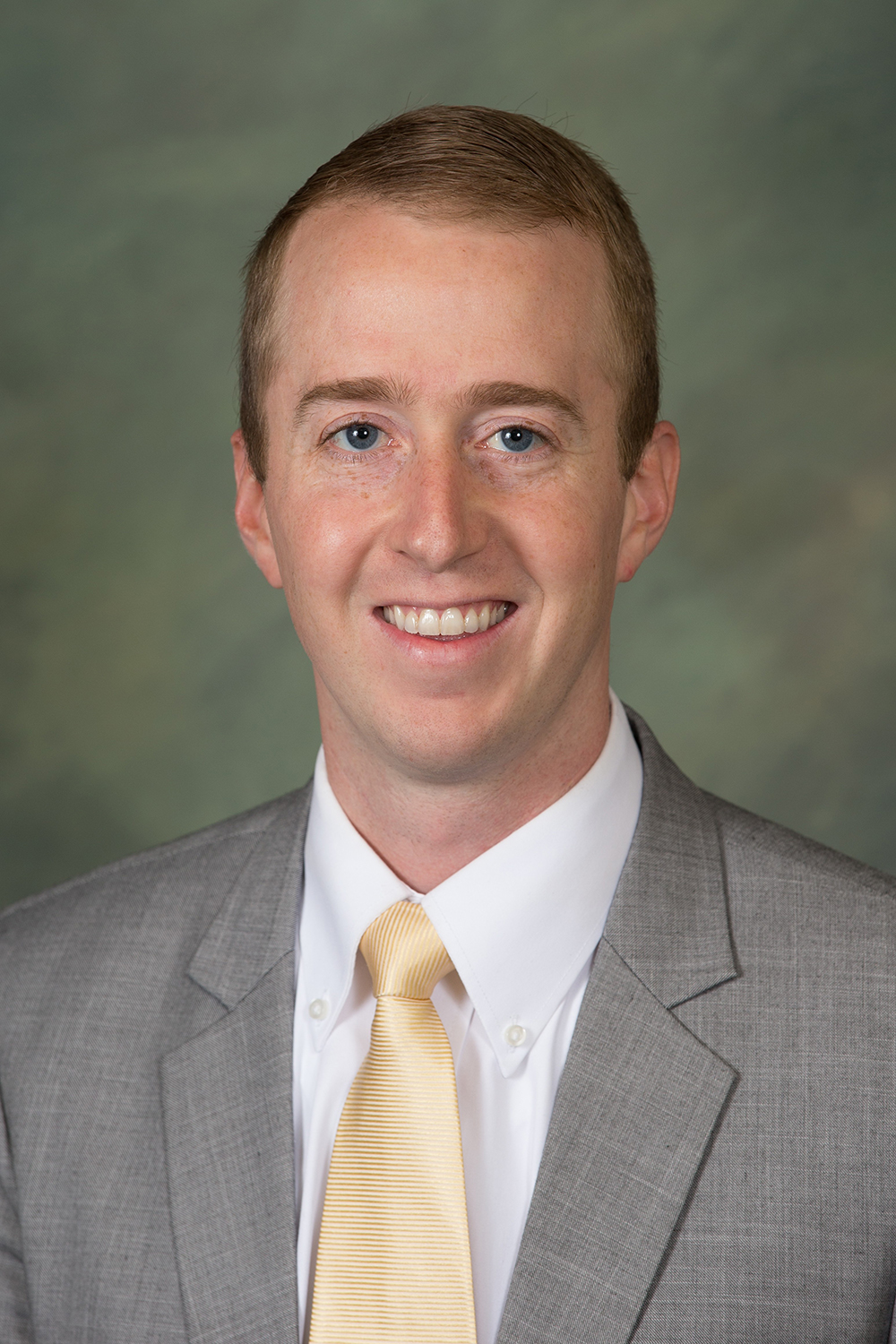
Trulaske professor makes waves using high-tech marketing research

This article originally appeared in the Fall 2024 issue of Trulaske Magazine.
There is science behind why customers prefer certain company slogans, product prices and brand logos – and Brady Hodges, assistant professor of marketing at the Robert J. Trulaske, Sr. College of Business, can prove it using high-tech marketing research to get inside consumers’ heads.

As founding director of the Trulaske Biometric and Behavioral Research Lab, Hodges works at the intersection of cognitive psychology and marketing, focusing on how people process numbers and language. At the heart of his research, he uses computer-based eye-tracking and facial expression analysis to zero in on how people view and react to such marketing tools as slogans, logos and prices ending in 99 cents.
“So, why do we care where people’s eyes are looking?” Hodges asked. “We care because the eyes are connected to the brain. When we see what people are looking at, we can get insight into their preferences, choices and what drew their attention. That’s what we’re interested in as researchers.”
Hodges has always been interested in what makes people tick. He originally went to college to study sociology but then became interested in linguistics and learned Spanish and Mandarin. Eventually, he found his way to marketing, where he discovered he could combine all his interests and get a job. He received a bachelor’s degree in business management and Chinese (with a minor in Spanish) from Brigham Young University and later received a doctorate in business administration-marketing from Texas A&M University.
“I am fascinated with how people process language and how individual words can shape our whole perception of something,” Hodges said.
The research
With that in mind, Hodges began to research the linguistic properties of effective slogans. His interest in the topic intensified when he discovered there had been little scientific research into effective slogan creation. What he found was only surface level and abstract, such as slogans should be creative and skillfully worded or “capture the soul of the brand.”
That’s when Hodges went to work, putting science behind his findings. During his research he used slogan testing and surprise memorability tests of real current slogans, fake YouTube bumper advertisements and eye-tracking technology to track people’s attention on individual words as they read slogans.
What he discovered is businesses can improve their brand recognition by making specific changes to their slogans. For example, slogans that are longer, include the brand name and use uncommon words are likely to be more memorable among potential consumers. Hodges’ findings also show that slogans that are shorter, omit the brand name and use simpler language are more likely to make the brand more likable in potential consumers’ eyes.
Hodges has completed five studies that today help businesses understand why people like or remember certain slogans better than others. He used similar research techniques to discover what makes prices ending in 99 cents so attractive to customers.
Again, using cutting-edge biometric research technology that tracks eye movement and analyzes facial expression, along with three laboratory experiments and an analysis of a large regional grocery store’s pricing and sales dates, Hodges found not all customers mentally process 99-ending prices the same way, and thus, not all 99-ending prices are created equal.
His main findings:
- Consumers respond more favorably to prices that they mentally encode as a “fluent number” or numbers that are familiar. Examples of fluent numbers include 16, 18 and 20 (in contrast to 13, 17 and 19, which are less fluent).
- Highly numerate consumers (those who are more comfortable with numbers) tend to round 99-endings prices up, while less numerate consumers tend to drop the .99, focusing only on the left digits.
- Store managers should customize their prices based on their target consumer population to maximize consumer price response.
Hodges has also used his biometric research technology to study what types of images and language work best in social media posts (Hint: best combination is colorful images and moderately complex words) and how consumers react to logos that include hidden images.
To learn more, contact Hodges at bhodges@missouri.edu.
How it works
Using computer-based eye-tracking analysis is arduous work because Hodges can only test one person at a time and there can be no distractions, or the results must be discarded. Marketing students are invited to sign up for the 20-minute test which takes place in a small, sparse room that is part of the Biometric Research Lab located in the lower level of Cornell Hall.
Participants use a computer that is equipped with an unobtrusive eye-tracking bar that is individually calibrated to accommodate each person’s height and distance from the screen. Once images begin appearing on the screen, the bar shoots infrared light into the participant’s eyes and the corneal reflections that come back help Hodges determine what the individual is looking at on the screen.
Hodges can also read facial expressions by using computer software that identifies 31 landmarks on a participant’s face, such as the eyebrows, nose, cheeks and lips. Then, based on how those facial landmarks move during a study, the computer program categorizes the movements and predicts the likelihood that the participant is experiencing one of seven emotions: contempt, anger, disgust, joy, surprise, sadness and fear.
In the future, Hodges could use the same computer software to measure galvanic skin response which is the change of electrical properties of the skin occurring under emotional arousal and stress – or the body’s reaction to an image or words. This response can be computed by applying a small current that measures the resistance of skin between two small electrodes usually placed on the hand. Additionally, an electroencephalogram (EEG) can be used to measure the brain’s reaction to images and words.
The Biometric and Behavioral Research Lab also includes a much larger room that is equipped with 40 computers that can be used for surveys and other data collection.